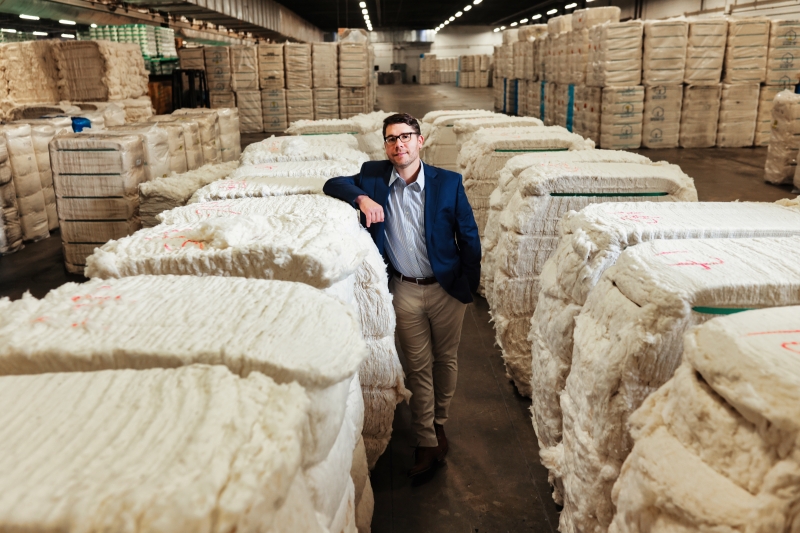The Art of: Assessing the Yield Wesley Rentz '02, senior director for Southeast Cotton Operation at Olam Cotton, knows a thing or two about risk management.
Hurricane season is an uneasy time for Wesley Rentz ’02. As senior director for Southeast Cotton Operation at Olam Cotton, he’s tasked with buying cotton futures — usually two years in advance — and cotton bales at the farm gate. Asa rain-set crop, the timing and the amount of rainfall is the difference between a harvest of low-grade to mid-grade bolls. And that translates into dollars in or out of pocket.
The Southeast, he explained, doesn’t typically produce high-grade cotton, and that’s directly linked to the weather. “October and November are fairly wet months, and that’s whenthe cotton bolls open. The years where we’ve had a lot of rain created some challenges in finding enough buyers to take those lower-grade bolls.”
When Rentz signs a forward contract with the grower, he obviously won’t know the quality of the cotton until it’s harvested. “That’s an area we want to make sure we have a good relationship with that farmer — that they’re a good credit risk.
“It’s a fairly high-stress environment,” he mused. “Risk management is one of the most important skills to have in this job.”
After teaching English in Thailand and China for a few years, Rentz joined Weil Brothers Cotton Inc. in 2005. When cotton futures dramatically spiked in 2008, the 100-year-old family-run company decided to close, and Rentz opted for an MBA to see where that led him. It took him right back to the cotton division within Olam International, the second-largest exporter of U.S. cotton. An early assignment was to grow the firm’s market share in Mexico. “We went from 0% to 10% of the market share in two years. Mexico is a tricky country to work with — there’s a lot of credit risk — but it was really neat to build the supply chain and work on the marketing, sales and management aspects.”
Rentz, who is based in Greenville, South Carolina, and is amember of the American Cotton Shippers Association, sources his cotton from Virginia to Alabama. “We basically buy any cotton we can get our hands on. The U.S. mills use mostly mid- and low-grade cotton to manufacture your white t-shirts, your underwear, your socks and some home furnishings.”
In the aftermath of Hurricane Ian, Rentz breathed a sigh of relief. “Parts of South Carolina were hit pretty hard, but so far this fall has been good for the cotton crop in the Southeast,” he said. “However, there’s never a dull moment.”
 Wesley Rentz ’02 (Photo by Jeremy Fleming)
Wesley Rentz ’02 (Photo by Jeremy Fleming)
You must be logged in to post a comment.